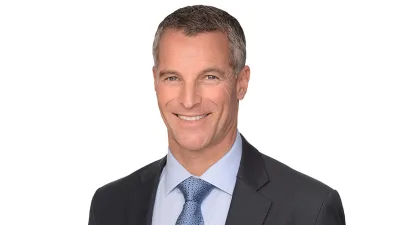Advisers step up to platform en masse
The attraction of financial planners to platforms shows no signs of abating with planners placing growing sums of money into retail and wholesale investments through master trusts and wrap accounts.
The numbers are not inconsequential, either, with more than 50 per cent of retail funds and 20 per cent of the total assets under management in Australia now placed through a platform according to Look Research and Plan for Life.
Translating this into dollar terms means that nearly $153 billion dollars of the $291 billion in retail managed funds are invested through a platform.
Much of it is of course tied up in superannuation investments with about 63 per cent or $96 billion of the $153 billion invested in corporate and personal super products via a platform.
This fact should come as no surprise given superannuation’s place in recent years for driving the growth of the managed funds industry through the super guarantee.
But what is interesting is that the higher level of growth over the last 12 months has not been in superannuation investments but in retail investments through platforms which have climbed by nearly 27 per cent. In contrast, super investments through platforms have only grown by about 10 per cent while the overall growth for investments through platforms has been 12.4 per cent.
Even these growth figures should not come as a shock if you take a step back and look at the wider landscape of Australian financial services.
Part of doing so includes bearing in mind one of the key events in the growth of the master trusts and wraps market, and that was the sale of Asgard in the late 1990s for $270 million.
While the idea of selling the platform was consistent with the growth cycle of the industry, that is, where small players gain scale and get purchased by larger ones, what was important was that only a few managed to profit from the sale when many had actually built the vehicle’s success. This has since become legend as Sealcorp envy.
And it has also inspired the growth of many more platforms.
Leo Wassercug, the managing director of Look Research which compiled the data for this report, says due to the popularity of such products as Asgard there is enormous interest in offering a platform as part of the adviser’s suite of tools and products.
This is done in the hope of replicating its success while also bringing the consolidated reporting and administration benefits common to master trusts and wraps.
“There has been a universal interest in offering a platform, either directly or by badging. Those who are able to afford the large technology expense build their own. The small end of town makes do with badging someone else’s,” he says.
And while badging sounds like the cheaper option, its rise has been as rapid as that of the directly owned, tapping into the knowledge that not every dealer group can afford, or wishes to create, its own platform, given the high costs of setup, maintenance and ongoing improvements.
The table below shows that badging has been a huge success for many groups, increasing their exposure far beyond what they would normally have achieved had they used their product as a stand alone product within their own organisation.
The best example of this, and has been for some time, is the BT Wrap product. In August last year BT made the move to offer its wrap product direct under its own banner. In the past, it had only been offered as a badged vehicle for super and non-super investments known as the Private Label Wrap.
Under its own banner, the combined funds under management in the BT Wrap and BT Super Wrap is about $174 million which by industry standards is a small sum, but given the short time it has been available, is a significant sum.
However the sums of money that have flowed into the nearly 30 badged incarnations available easily dwarf this figure with more than 33,000 investors outlaying a total $6.47 billion to be managed by BT through their Private Label super and non-super wraps at June 30 this year.
At the same time last year the funds under management figure stood at $3.6 billion in Private Label Wrap, meaning there has been an increase of $2.86 billion over the 2001-02 financial year alone with net flows over the same period at $3.37 billion despite the poor run of BT in other areas of the its business.
But badging is and will remain a lucrative operation as the table below indicates by the sheer amount of badged products available, totalling 66 at last count trading off the need for advisers and dealer groups to have a platform to offer to clients.
While the master trust and wrap market show no signs of reducing their strong presence on the adviser’s desktop there is a new trend emerging, according to Wassercug, which is the blurring of boundaries between what is a wrap and what is a master trust.
“It is a case of the definitions between products blurring; thus products that appear to be master trusts are not actually master trusts,” he says.
One example Wassercug cites is that a number of products currently available through Australian Skandia — the Skandia Global Investment Solutions, Wholesale Solutions and Retirement Solutions. Skandia product manager Keith Hudson describes these products as “mirroring” master trusts without actually being in one.
According to Wassercug the product disclosure statements (PDS) indicate they may be invested in directly, through the Skandia PDS, or indirectly, through a master trust or wrap.
Katie Mavin, the product manager for Colonial First State’s FirstChoice, says similar things about their product describing it as being not a master trust but rather a super plan offering investors external managers, but not offering consolidated reporting.
But despite these moves away from easily definable products, master trust and wrap providers may be bound by what we have all come to know and understand in recent years, regardless of how they choose to describe their own products .
One manager put it in the following terms.
“There was some discussion as to whether or not we could classify our product as a ‘master trust’ as we prefer to label it a multi manager investment solution but for want of a better pigeon hole ‘master trust’ is where it lies.”
Recommended for you
This senior consultant has emphasised why ‘playing the long game’ of cultivating a desirable work culture is vital for high-performing financial advice firms and their teams.
With superannuation funds and financial advisers being the top two sources of information for retirees, a TAL white paper has revealed which they turn to first.
Newly launched wealth technology platform HeirWealth has appointed multiple senior industry figures to its advisory board including former MLC CEO Geoff Lloyd as chair.
Clime has entered into a heads of agreement to divest Madison Financial Group to a rival licensee for $2 million.















